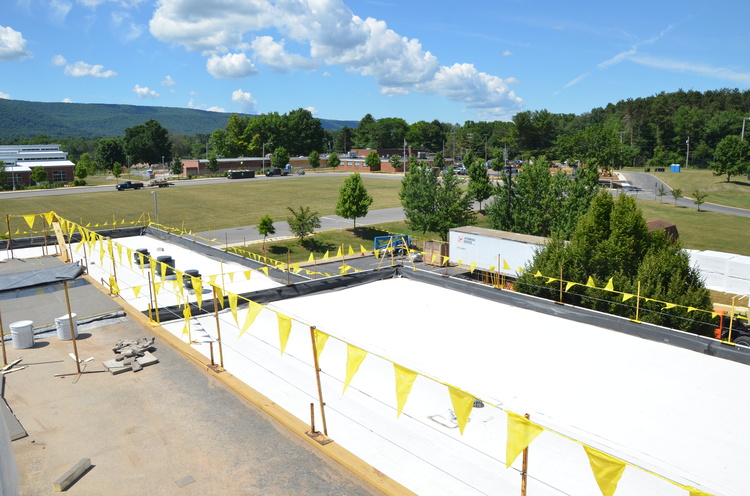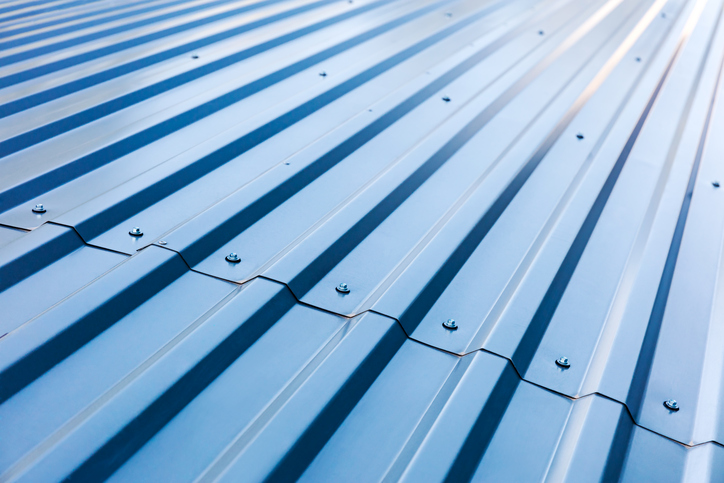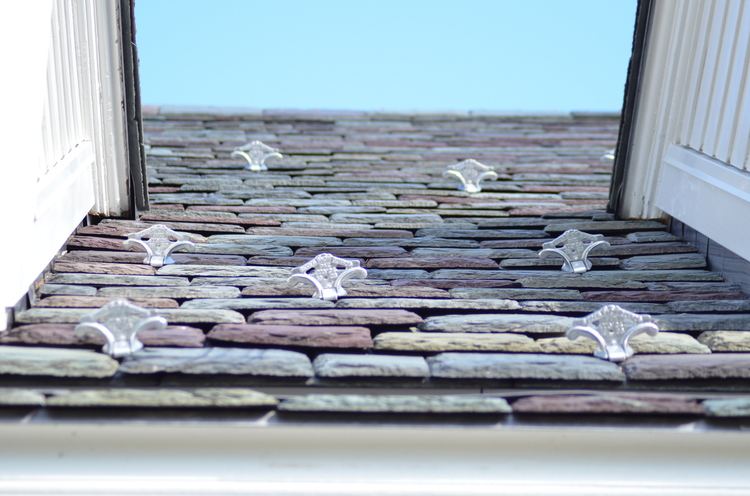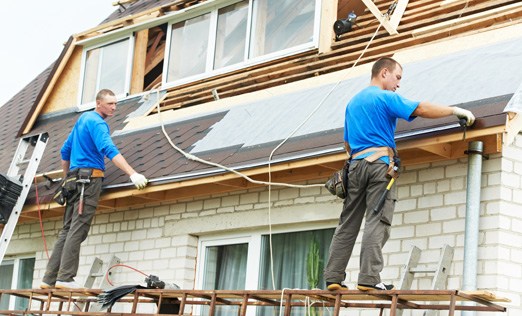Built-Up Roofs for Mid-Atlantic Commercial Businesses
In use since the mid-1800s, built-up roofs have earned a reputation as one of the most reliable and long-lasting systems on the market. Made up of six basic materials: insulation, base plies, ply sheets, adhesive, surfacing, and flashings, this roofing style is perfect for low-slope or flat roofs.
If you are looking for a new roof for your business, a built-up roofing system is a viable option. For larger buildings like warehouses, shopping centers, and more, a flat roof is a common choice. The flat or low-slope feature allows you to add other necessary systems to your business such as heating and cooling systems, ventilators or water heaters.
For a long-lasting and reliable roof for your business, David Maines & Associates, Inc. is ready for the job. We will advise you throughout the entire process in order to find the right solution for your business, whether it is a built-up roof or another type.
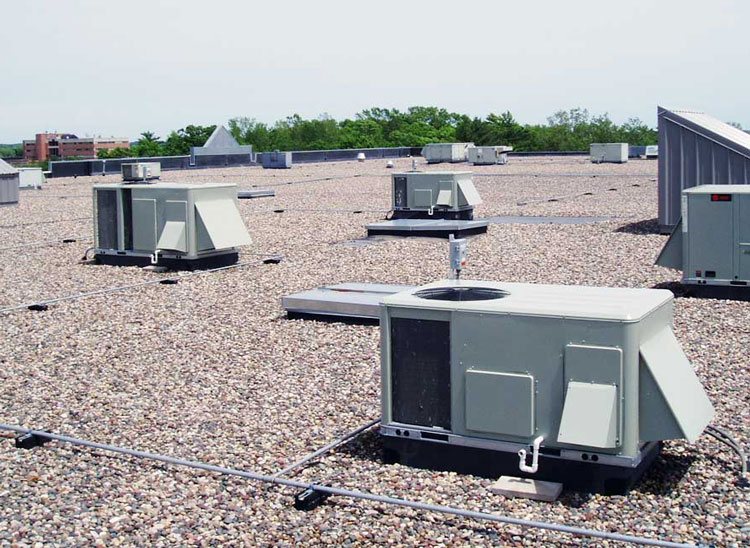
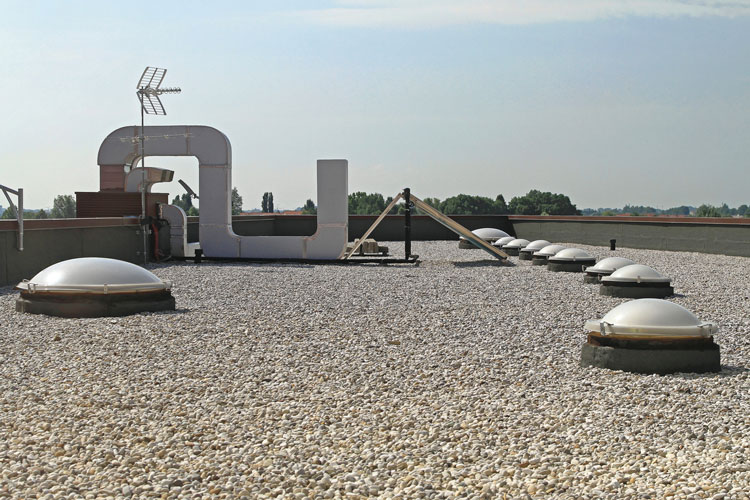
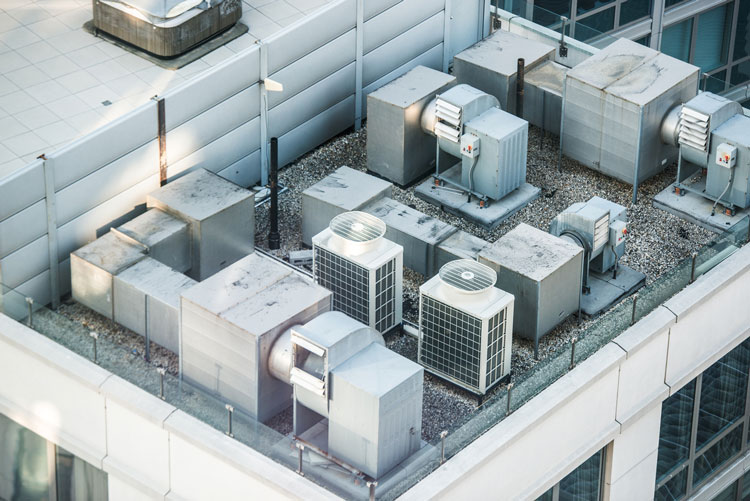

- Broad range of application methods
- Competitive lifecycle cost
- Strong, flexible, impact-resistant system
- Resists environmental changes
- Long-term warranties available
What Is a Built-Up Roofing System?
The techniques for built-up roofing systems have been around for more than 100 years. This type of roof’s long history proves that it is reliable, effective and long-lasting. Built-up roofs are also called “tar and gravel” roofs. And while this type of roof has been around for a long time, the technique was refined and improved further over that time.
Built-up roofing is actually a technique that is used, rather than a “style” of roof. This is a common misconception. The layering technique behind the built-up roofing method is what makes it unique, not its appearance.
This type of roof is made up of layers of different materials. These layers make up a membrane. At David Maines, we use layers of insulation, base plies, ply sheets, adhesive, surfacing and flashings. Once the layers have been put together, a built-up roof has a covering as well. This top layer is usually made from gravel, slag, mineral granules, hot asphalt that’s mopped overtop, aluminum coating or elastomeric coating. A built-up roof has a flat or low-slope appearance.
Average Cost of a Built-Up Roof
If you need a new roof installed, cost is an important thing to consider. The cost of a commercial roof installation can vary depending on several factors, such as location, time of year, installer and materials.
If you are considering a built-up roof for your business, you can expect to pay more if you have a project with special circumstances or conditions. For example, if there are fixtures that the roof needs to be installed around, the cost can rise.
To make sure you’re getting the best price, it is ideal to request an estimate from a few different installers. Your new built-up roof will be a big job, so it will be a larger expense. When you’re spending that much, you want to make sure you’re getting a good price. At David Maines, you will feel confident that you’re getting high-quality work at a fair price.
Pros and Cons of a Built-Up Roof
The built-up roof is a popular roofing option for commercial buildings. And there’s a reason for that: there are lots of benefits to this type of roof.
Advantages of a Built-Up Roofing System
- Fewer leaks
- Not as affected by the sun
- Durable against inclement weather
- Low maintenance
- Can be home to satellites, A/C systems & more
- Safe to walk on
This type of roof has excellent waterproofing and ultraviolet protection. Once the roof is installed, you’re less likely to have leaks or see degradation from the effects of the sun. It’s also highly resistant to weather like rain, snow, ice and wind.
With such a high resistance, a built-up roof will not need as much work done on it. Its resilience contributes to its low maintenance requirements. This is the characteristic of built-up roofs that is the most appealing to business owners and project managers. With so many other factors going on in your business, worrying less, about as much as possible, is always a welcome thing. And since a built-up roof requires little maintenance, it’s a comparatively low-cost option post-installation. During its lifetime, you mainly need to worry about smaller, less expensive maintenance.
Another benefit of built-up roofing systems is their strength. Since built-up roofs are flat or low-slope, they need to be strong enough to support a variety of other appliances like satellites, air conditioners and more. The strength of these roofs also makes it safe for maintenance workers. When those appliances, or the roof itself, needs work done, people can safely walk the roof.
As with anything else, a built-up roof also has its drawbacks. There aren’t many, but this type of roof has important caveats that you should consider before having one installed.
Disadvantages of Built-Up Roofs
- Slower installation process
- Possible fumes during installation
- Difficult to find leaks
Since a built-up roof is made from layering, it has a slower installation process compared to other roofing types. When you factor this in with weather-related delays and the size of the building, it may take longer for the roof to be finished. During the installation process, the materials used in a built-up roof can let off potentially hazardous fumes. This is not an issue if it’s a new build, but it could affect the people using the building.
The final drawback to consider with built-up roofs is the difficulty in finding leaks. Although these roofs have an excellent resistance to water, leaks can happen. And since the roof is made with layers, it makes it hard to find exactly where a leak is coming from.
If you’re considering a built-up roof, take these pros and cons into consideration.
When Built-Up Roofing Works Best
Built-up roofs are suited best for a few different scenarios. The layering is perfect for low-slope roofs. A low-slope roof promotes water runoff while still allowing it to be functional. Many businesses that operate out of large buildings use the roof to install other equipment. This big, heavy-duty equipment can be an eyesore or dysfunctional when it’s installed in other places. Built-up roofs are also excellent for warmer climates. This type of climate sees heavier rain and other types of weather, which built-up roofs are resistant to.
